Sustainable living doesn’t have to be about sacrifice. It’s about finding creative ways to thrive within the planet’s limits. This guide, packed with 9 imaginative exercises, invites you to tap into your own ingenuity and discover the joy of aligning your values with your actions. Get ready to transform your relationship with the environment, one inspiring idea at a time.
Introduction: Unlocking Creativity for a Sustainable Future
Imagine looking at our planet from space. The verdant forests, the azure oceans, and the sweep of the Sahara-all whisper a message of balance. But down here on Earth, achieving this balance requires more than just understanding sustainability; it needs a fire of creativity to spark practical action. This is what I aim to explore with you: the potent mix of imagination and eco-conscious living to create a future that respects and revitalize our world.
Sustainable living is no longer a choice, but a necessary path we must walk-treading lightly and with care. The decisions I make in my daily life, from conserving energy to reducing waste, contribute to a larger mosaic of environmental preservation.
But let’s be real, knowing what to do doesn’t always translate into doing it with passion and enthusiasm. This is where creativity enters the fray.
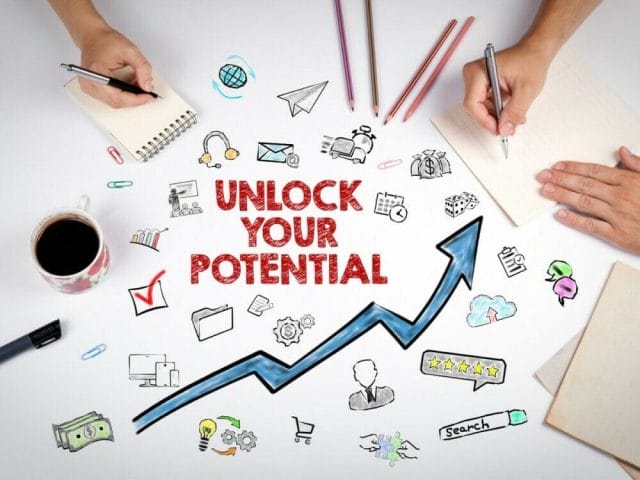
I am going to share ten inspiring exercises designed to reignite your innate creative spark. Each one is a step towards infusing your daily routine with sustainable practices that feel fresh and exciting. Think of these activities not as tasks, but as opportunities to reimagine and enrich your lifestyle in harmony with nature.
Exercise 1: Imagination Mapping – Your Sustainable World
Imagine a lifestyle that’s not only beneficial for you but also for the planet. I find that when it comes to adopting a sustainable lifestyle, envisioning the end goal can be a powerful motivator. That’s where imagination mapping comes in. It’s a creative technique I use to pictorially represent my aspirations for a greener life, and I’m confident it can help you too.
To start, grab a piece of paper, some colored pencils, or any other materials you feel drawn to. Sketch out your current living space and daily routines, then reimagine them with sustainable improvements.

Love coffee in the morning? Picture a compost bin right beside your coffee maker, for used grounds. Is your wardrobe bursting at the seams? Envision a capsule wardrobe with versatile, ethically made pieces. This exercise isn’t just about dreaming; it’s about creating a tangible roadmap. Identify specific areas where you can incorporate eco-friendly practices.
If it’s about reducing electricity usage, sketch solar panels on your roof and imagine line-drying your laundry in the backyard, for instance. These visual cues serve as daily reminders and actionable goals that nudge you towards a sustainable life.
As you bring each sustainable practice into your vision, you’ll see your daily life transforming right before your eyes on paper. This isn’t some lofty ideal; it’s a practical step towards making a real difference. Now that you’ve visualized it, you’re ready to leap into brainstorming innovative ways to reduce waste—a perfect segue into the next exercise.
Exercise 2: Green Brainstorming – Unusual Ways to Reduce Waste
I’m a big advocate for brainstorming – it’s simple, effective, and surprisingly fun when you’re focusing on sustainability. In this exercise, I’ll guide you through unconventional ways to think about reducing waste that moves beyond just the ‘reduce, reuse, recycle’ mantra. Let’s unleash some innovative solutions that often go unnoticed.
Start by gathering a collection of items you usually throw away. Now, challenge yourself to brainstorm as many uses for these items as you can. Think about those bread tags, single socks that have lost their partners, and even the broken garden pots.
Could bread tags serve as makeshift guitar picks or funky mosaic materials? How might single socks transform into quirky hand puppets?

What about giving new life to broken pots by turning them into miniature fairy gardens?
To ramp up the excitement, why not bring friends or community members together for a collective brainstorming session? It’s incredible how sharing ideas can spark even more creativity and lead to actions that foster a more waste-conscious community. Plus, it’s a great way to connect with others who are passionate about sustainability.
Remember, the wackier your ideas, the better. It’s about stretching your imagination and finding joy in discovering the potential in what we often overlook. You’ll likely surprise yourself with the practical solutions that can stem from such a playful approach.
Exercise 3: Energy Safari – Discover Home Efficiency
I find sustainability to be more than just a buzzword; it’s a commitment to a better future. Today, I invite you to join me as I explore a fun and interactive way to bolster sustainable living, sparking sustainable fun at home. Imagine transforming what might be a mundane task—energy auditing—into an immersive family adventure. Welcome to the ‘Energy Safari.’
Here’s the deal: An at-home energy audit doesn’t have to be a tiresome chore. It can be a TREASURE HUNT for efficiency. I’ll walk you through a step-by-step guide to scrutinizing your living space for energy consumption culprits. Grab a notebook, a pen, and a keen eye for detail—embark on a quest for sustainability within the walls of your own fortress.
Now, how do we make it a family affair? By gamifying the experience. Turn off the lights, hand out flashlights, and let’s play energy detectives. Kids are often excited about missions and challenges. Encourage them to spot the overlooked, energy-draining appliances or to find creative solutions for conserving electricity. It’s a fantastic way to impart valuable life lessons about resourcefulness and environmental stewardship.
After the safari, gather the findings. It’s time to sit together and draft an action plan. What did you discover? Perhaps the fridge is working overtime, or the old windows let in more than just a breeze. NOW, decide on the steps to remedy these inefficiencies. From sealing leaks to investing in energy-efficient bulbs, every decision is a stride towards a more sustainable home.
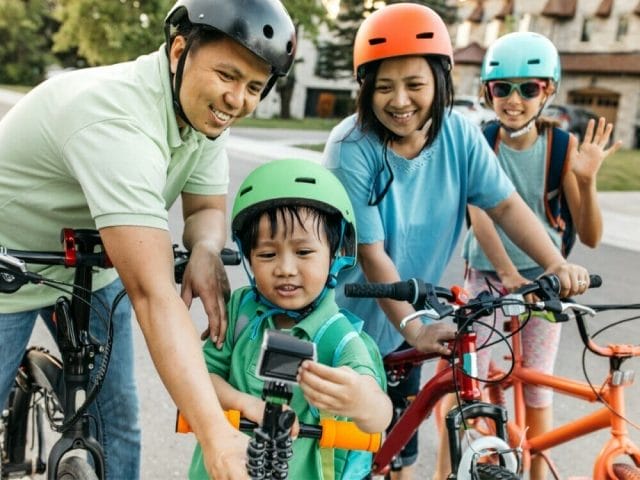
Think of the potential impact. Teaching your kids about energy conservation can shape their habits for a lifetime, promoting a healthier planet. It’s an exercise in creativity, analytical thinking, and problem-solving, all wrapped up in a memorable family bonding experience.
Once you’ve tapped into this resourceful spirit, it’s natural to delve into the realm of mindfulness—where your home efficiency efforts align with a broader sense of responsibility towards Mother Earth.
Exercise 4: Upcycling Challenge – Transforming Trash to Treasure
Think of something you usually throw away or no longer use and giving it a new life and purpose. It’s not just a way to reduce waste; it’s a creative avenue to express yourself while contributing to sustainability. You don’t need to be an artist or a DIY expert to begin this journey. With a bit of imagination and a willingness to experiment, you can breathe new life into items that would otherwise be destined for landfill.
START HERE: Identify objects around your home that are no longer serving their initial purpose. This could be anything from an old t-shirt to a broken chair. The key is to see the potential in these objects.
Now, it’s time to reenvision these items. What could that t-shirt become if not a shirt? How about a tote bag, a pillow cover, or quilt material? That broken chair? Perhaps it could become a garden planter. Transform your household waste into something useful and creative.

Search online for upcycling ideas, or just follow your intuition. Critical to upcycling is embracing imperfections. If the finished product has irregularities, that’s fine! These ‘flaws’ often add to the charm and narrative of the piece. It’s not about perfection; it’s about purpose.
SHARE your successes and experiments. Connect with others who enjoy upcycling. Social media platforms have many communities where you can find inspiration, share tips, and maybe even swap upcycled goods. Challenge yourself regularly. Set goals to upcycle certain items within your household, and notice how this changes your purchasing habits. As you seek out items that are durable and versatile, you’re contributing to a culture of sustainability that reverberates beyond your own home.
Exercise 5: Eco Journal – Penning Your Green Journey
You might not think of it at first, but writing can be a powerful tool on the path to sustainability. I’m talking about keeping an eco journal, a focused chronicle of your environmentally conscious journey. This isn’t just about recording actions, but it’s about charting your evolving relationship with the planet. Here’s why it can make a real difference.
When I started my own eco journal, I noticed something surprising. The act of writing down commitments and daily habits started to make them more real, more tangible. It was like those written words held me accountable, and they became a constant reminder of the promise I’d made to myself and the earth.
A journal dedicated to your sustainability efforts helps in tracking progress over time. Imagine looking back over the past months and seeing the growth in your eco-friendly practices.

It becomes a personal story of change where you’re the protagonist, fighting in Earth’s corner.
Here’s how you can get started: Begin each entry with a simple note about your activities for the day that had a sustainable impact. It could be as small as choosing a reusable bag or as significant as starting a compost bin. Add reflections on how these actions made you feel and what challenges you might have faced.
To make it a habit, set a regular time each day to jot down your thoughts. Keep it by your bed, and before you switch off the light, spend a few minutes reflecting on your day. This is also a perfect opportunity to plan future eco actions and set small, attainable goals.
Now, as we transition into the next exercise, let’s take the awareness and accountability fostered in your eco journaling and channel it into direct engagement with the natural world. Exercise 6 will enhance your connectivity with nature and in turn, provide profound inspiration for your sustainable living choices.
Exercise 6: Nature Immersion – Enhancing Biophilic Bonds
You may not have come across the term ‘biophilia,’ but it has everything to do with our innate connection to nature. It turns out, making time to simply be in natural surroundings can have a profound impact on our desire to live sustainably. This exercise is about creating intentional moments to immerse in nature, which in turn can spark a deeper commitment to environmentally friendly practices.
Start with something as simple as a walk in a nearby park or a hike in a nature reserve. Pay close attention to the diversity of plants, the sounds of wildlife, and the textures around you.
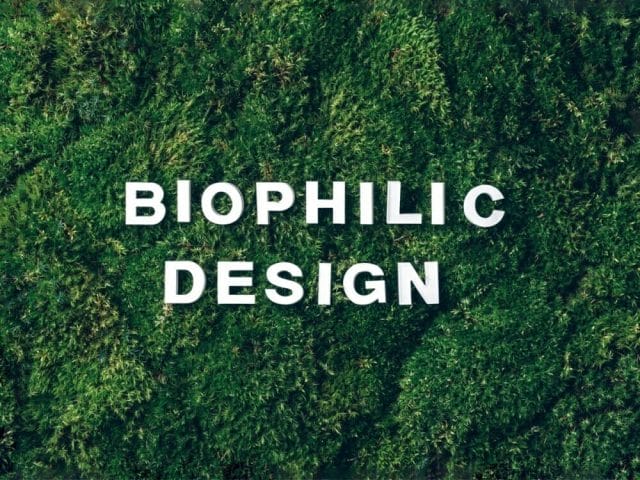
Take photos or sketch what you see; these materials can serve as inspiration for sustainable living projects or simply remind you why sustainability matters.
If you have a garden or even a balcony, get your hands dirty. Engaging in gardening connects us to the cycle of life and growth, reinforcing the need for sustainable ecosystems.
For apartment dwellers, consider joining or initiating a community garden. It’s both a social and environmental endeavor, where shared knowledge fosters a sense of community and individual responsibility to the Earth. Transforming these encounters into daily habits is your ultimate goal.
Think about water conservation while you admire a stream, or biodiversity as you observe different species thriving together. These mindful observations can then be translated into conservation efforts at home and inspire changes that promote sustainability.
Next, as you prepare to move into the realm of sustainable eating, remember the biophilic connections you’ve nurtured. Create a seamless transition to our seventh exercise, where we’ll explore how the food we choose and the ways we prepare it can also serve as creative exercises for a more sustainable lifestyle.
Exercise 7: Green Cooking Masterclass – Sourcing and Cooking Sustainably
Sustainable cooking is more than a trend; it’s a way of life that can have a significant impact on our planet. It begins with mindful sourcing of ingredients, emphasizing local and seasonal produce, which reduces the carbon footprint associated with food transportation and storage. For starters, make regular visits to your local farmers’ markets or become a member of a community-supported agriculture program. By doing so, you’ll not only eat fresher, more flavorful food, but you’ll also support local economies. Secondly, plan your meals around what’s currently in season; it’s an exciting challenge that can spark your creativity in the kitchen.
When it comes to the cooking process itself, focus on energy efficiency. Use pressure cookers or slow cookers, which consume less energy than ovens. Opt for batch cooking or one-pot meals to save time and resources. Cooking sustainably also means minimizing food waste, so get inventive with leftovers, turning them into entirely new and delicious meals.
Next comes the fun part: sharing your journey. Host a green cooking masterclass at your home or virtually, inviting friends to learn about sustainable cooking.
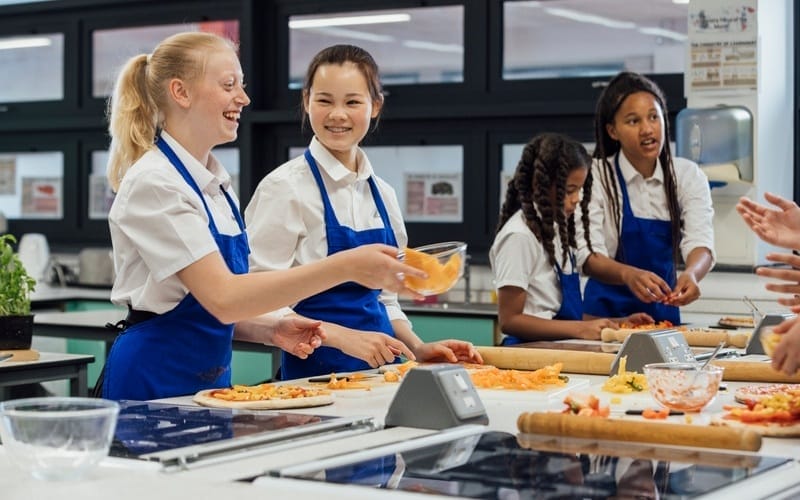
Share your favourite recipes, demonstrate how you utilize seasonal ingredients, and discuss the benefits of your sustainable choices.
Don’t forget to challenge your guests to create their own dishes using sustainable principles. Maybe even start a friendly competition with a prize for the most original and sustainable dish. This is an excellent segue into our next topic: Sustainable Storytelling.
Exercise 8: Sustainable Storytelling – My Eco Hero
I believe that stories have a remarkable ability to inspire change. When we share narratives about those who are making a positive impact on the environment, we not only honor their efforts but also motivate others to take action. That’s the core of sustainable storytelling.
In this exercise, I’d like you to think of an ‘Eco Hero’, someone whose actions towards sustainability have inspired you. It could be a well-known environmentalist, a community leader, or even a family member. Here’s how to create your own story of change:
Start by jotting down why this person stands out to you. What makes their environmental action unique? How have their choices influenced your perception of sustainable living? Remember, the personal connection in your story can be a powerful force for readers.
Outline your eco hero’s journey. Describe the challenges they faced and how they overcame them. Reflect on their sustainable practices and how they’ve contributed to the health of our planet. This isn’t just about a list of accomplishments; illustrate their determination and the impact of their actions.

Think about the storytelling medium that best suits your narrative. Will you write a blog post, create a video, or perhaps start a podcast episode? Choose a platform where your story can reach others who share a passion for sustainability and may feel inspired to create their own eco narratives.
‘My Eco Hero’ is an invitation to celebrate the individuals who catalyze change. By sharing their stories, we instill awareness and a sense of urgency to act among our peers. Cultivating an anthology of eco heroes can become a resource for learning and a beacon for action in our communities.
Exercise 9: Mindfulness Meditation – The Earth and You
Infusing our daily routine with eco-friendly habits can sometimes feel like a daunting task. But when we introduce mindfulness into the equation, the path to a sustainable lifestyle becomes clearer and more accessible. This practice opens up a space to recognize our deep connection with the environment and allows us to make more compassionate choices. By engaging in mindfulness meditation that focuses on the earth and its preservation, we not only enrich our own lives but contribute to the well-being of our planet.
I’ve found that guided meditations concentrated on sustainability can shift perspectives and lead to profound realizations about our role in nature.
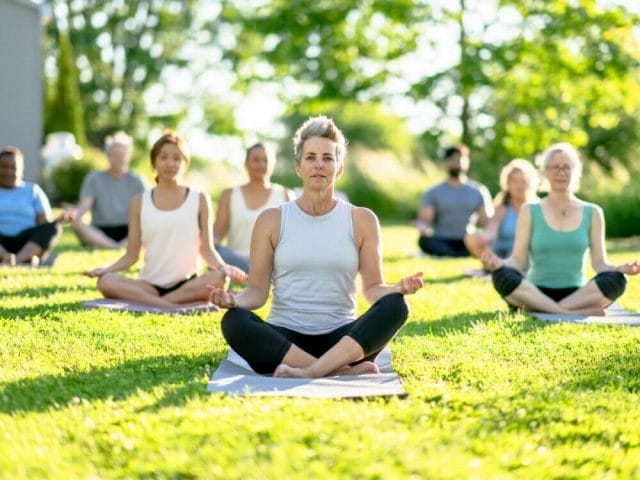
These sessions remind us of the delicate balance within ecosystems and encourage us to act with greater care. As we sit quietly, reflecting on our actions and their impact, the importance of conservation and stewardship is cast in a new light. Integrating these practices into the rhythm of daily life can reinforce your commitment to sustainable living.
Simple actions, like mindful breathing while recycling or showing gratitude for your resources before a meal, serve as reminders of your goals. They anchor eco-friendless into the fabric of every day, ensuring these principles aren’t just ideals you think about but actions you embody.
As we continue to weave mindfulness into the narrative of our lives, the benefits reach beyond individual wellbeing. We start to see change within our families, communities, and beyond. Mindfulness becomes a gateway to a culture of care—an ethos where every decision is measured against the welfare of the earth. This shift is critical as we face the environmental challenges before us.
In closing, the journey towards sustainability is ongoing and ever-evolving. By adopting mindfulness meditation with a focus on the earth, you foster a mindset that nurtures responsible stewardship. It’s more than just individual actions; it’s about cultivating a collective conscience that prioritizes the health of our environment.
TAKE ACTION TODAY, integrate a mindful moment into your schedule, and watch as your day-to-day choices align more closely with the planet’s needs.
Conclusion: Igniting Sustainable Actions through Imagination
I’ve taken you through a series of imaginative exercises designed to kindle your passion for sustainable living. Our journey together demonstrates that creativity is not just an outlet for artistic expression but a compelling tool for inspiring meaningful change.
In each activity, from envisioning a sustainable world to crafting eco hero narratives, the underlying goal remains clear: to embed sustainability into the mosaic of our daily lives. This journey has highlighted that every choice, no matter how small, can contribute to a larger ecological impact.
Sustainability hinges on collective effort, yet it starts with individual action. By engaging with these exercises, I hope you’ve seen the power of your own creativity in sparking real-world changes. Imagination is the starting point for innovation; when applied to sustainability, it can lead to breakthroughs in how we live, work, and care for our planet.
As we wrap up this article, remember that the journey doesn’t end here. Take these exercises beyond the page. Challenge yourself to keep experimenting and expanding your eco-conscious habits.
Share your experiences and encourage others to join in. Together, we can weave a tapestry of sustainable practices that benefits our communities and the environment. It’s within our collective grasp to fashion a greener, more hopeful world for generations to come.
In closing, embrace these creative exercises not just as a checklist, but as a catalyst for lifelong sustainability. I urge you to keep exploring, learning, and growing in your eco-friendly endeavors. Let’s harness our imagination’s power to light up the path to a sustainable future with each inventive step we take.

